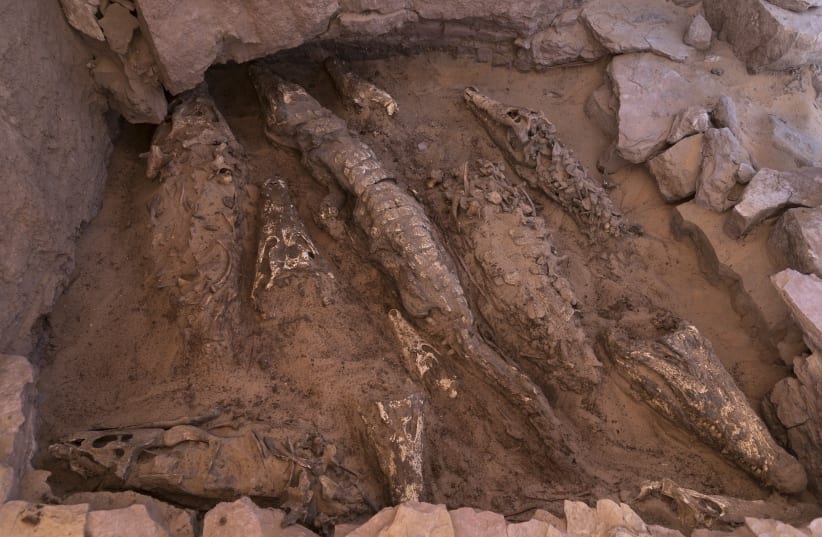Crocodiles were mummified at Qubbat al-Hawā, located on the west bank of the Nile, during the 5th Century BC using a different method than other crocodiles, new research showed.
The research was led by Bea De Cupere from the Royal Belgian Institute of Natural Sciences in Belgium and the University of Jaén in Spain.
The findings were published on Wednesday in a peer-reviewed study in PLOS ONE journal.
Although mummified animals such as crocodiles are commonly found at archaeological sites in Egypt, mummified crocodiles are often not examined thoroughly, according to the researchers.
“A review of the literature shows that the amount of detailed morphological observations on the crocodiles themselves and on the mummification techniques is quite limited.”
Study
"A review of the literature shows that the amount of detailed morphological observations onthe crocodiles themselves and on the mummification techniques is quite limited," they noted.
In the new study, the researchers give a thorough analysis of the morphology and preservation of ten crocodile mummies uncovered in rock tombs at Qubbat al-Hawā.
"In this paper, we report on an exceptional deposit of crocodiles found during the 2019 excavations in an undisturbed tomb," they said. "The finds include five more or less complete, large animals as well as five skulls of also relatively large crocodiles that provide unique information, despite the fact that numerous crocodile mummies have been discovered in Egypt for centuries."
The researchers were able to study the crocodile remains without unwrapping them or using CT scanning and radiography. The team identified two species based on the physical features: West African and Nile crocodiles
Unique preservation methods
The researchers noted that the mummies were preserved differently than specimens from other locations; specifically, there was no evidence of the use of resin or the evisceration of the carcass during mummification. The study said that this indicates they were from the Ptolemaic age.
"Preliminary results of this archaeological project have shown that the funerary use of this site runs from the Ptolemaic period (3rd century BC) till the 1st/2nd century AD," the study read. "It is precisely from this later period that numerous crocodile mummies have been reported from Kom Ombo (50 km north of Aswan) and Esna (about 150 km), the localities closest to Qubbat al-Hawā where crocodile cemeteries have been reported."
Limitations of the study
The study was limited by a lack of available DNA and radiocarbon that could have been used to identify and date the remains. The researchers noted that studies in the future will improve researchers' understanding of ancient Egyptian culture.

